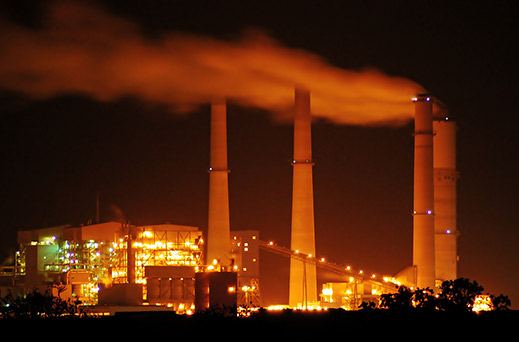A lire sur: http://www.technologyreview.com/news/523051/2013-the-best-energy-stories-of-the-year/

By Kevin Bullis
Clean energy technology made progress in 2013, but low-carbon energy isn’t growing fast enough to meet goals for limiting climate change. That would require switching energy sources as fast as France did when it converted almost all of its electricity generation from fossil fuels to nuclear power in just 30 years. While solar panels and wind turbines are being installed quickly, worldwide fossil fuel consumption is risingeven faster, causing greenhouse gas emission rates to go up. The U.S. Environmental Protection Agency is drawing up carbon dioxide rules that will shut down coal plants, but they will do little to reduce emissions more than low natural gas prices already have by prompting a shift away from coal. Meanwhile, coal consumption is increasing around the world.

Regulatory target: Coal power plants like this one in Texas will be subject to limits on carbon dioxide emissions as part of the Obama administration’s new climate plan.
The fact that fossil fuels are likely here to stay for many decades heightens the need to capture and store the carbon dioxide they emit. Progress on demonstrating such technology at a large scale has slowed, but researchers are continuing to develop innovative technologies that could make storing carbon far cheaper, including the prospect of using advanced fuel cells to capture greenhouse gases.
The electric car maker Tesla Motors impressed investors by having its first profitable quarter, paying off a massive government loan nearly a decade early, and hitting expectations for vehicle purchases, unlike GM, Nissan, and others that had disappointing sales after introducing electric cars in previous years. More importantly for the long term, Tesla is making great progress in reducing the cost of batteries—the most expensive part of an electric car—and speeding up charging, both of which will be necessary for electric cars to go mainstream and have a meaningful impact on oil consumption.
A few years ago, LED light bulbs produced a grayish light and cost $50 to $100. As of this year, you can buy ones that produce light that’s hard to tell apart from incandescent light, and that cost $10 to $14. Affordable LEDs could lead to big reductions in energy use.
The U.S. Department of Energy, as part of a $452 million program, is helping two companies license newsmall modular reactor designs that are meant to overcome the biggest challenge to nuclear—its high upfront costs. Meanwhile, advanced molten salt reactors are getting closer to reality. A startup in the United States is developing a nuclear reactor that costs half as much as conventional ones, is safer, and produces almost no long-lived nuclear waste. In China, hundreds of engineers at the Shanghai Institute of Applied Physics are working on similar technology. They hope to build a test reactor in a few years.
Aucun commentaire:
Enregistrer un commentaire